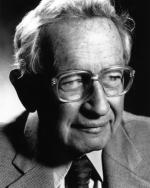
Submitted by Administrator on Tue, 31/03/2020 - 17:41
Philip Anderson (“Phil”) was arguably the pre-eminent condensed matter theorist of the twentieth century. He made numerous foundational contributions to the understanding of magnetism, superconductivity and disordered materials. He was awarded the 1977 Nobel Prize in Physics (shared with John van Vleck and Nevill Mott) for “fundamental theoretical investigations of the electronic structure of magnetic and disordered systems.”
Phil was an important figure and influence within the Cavendish Laboratory. From 1967-1975 he held the “Physics 1966” Professorship and was Head of the Theory of Condensed Matter Group, assisted by Profs. Volker Heine and Sam Edwards. He delighted to point out that, in naming this group, he introduced the term “condensed matter physics.”
Phil was a major agenda setter in condensed matter physics for more than 50 years, both through his own work and through his inspirational influence on those around him. His research papers and more general writings defined the subject, notably through his textbook “Concepts in Solids” based on his Cavendish lecture course. His 1972 article “More is Different” pointed out the limitations of reductionism and emphasized that fundamental laws of nature can have “emergent” properties markedly different to those of the constituents. He used his insights in superconductivity to explain how mass can be generated by breaking of gauge-symmetry and pointed out the relevance to fundamental particle physics.
As a result of his time in Cambridge, and his ongoing connections and support for the work here, Phil was colleague and friend to many members of the Cavendish. He will be much missed.
